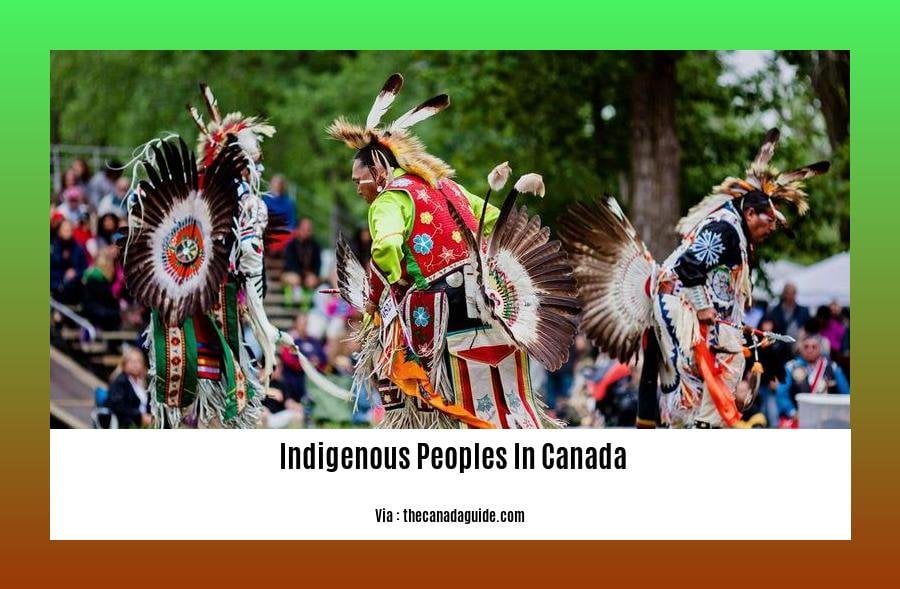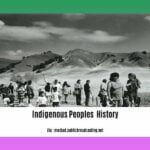In “The Multifaceted Realities of Indigenous Peoples in Canada: A Journalist’s Perspective,” we delve into the complex and diverse experiences of Indigenous communities in Canada.
Key Takeaways:
- The term “Indigenous peoples” encompasses First Nations, Inuit, and Métis people in Canada.
- Indigenous peoples have a rich history and have made significant contributions to Canadian culture, including the invention of the canoe, snowshoes, lacrosse, and maple syrup.
- The recognition of Indigenous rights and the ongoing journey towards reconciliation are important aspects of understanding contemporary Indigenous experiences in Canada.
Indigenous Peoples in Canada

Having spent over a decade as an Indigenous journalist in Canada, I’ve devoted my career to shedding light on the multifaceted realities and experiences of these communities.
Understanding Their History and Culture
Canada is home to three distinct groups of Indigenous peoples in Canada: First Nations, Inuit, and Métis. Each group has its unique history, culture, and language.
Contemporary Challenges
Indigenous peoples in Canada face ongoing challenges, including:
- Poverty and economic inequality
- Discrimination and racism
- Health disparities
- Environmental degradation
Progress and Reconciliation
Despite these challenges, Indigenous peoples in Canada have made significant progress in recent decades. The government has taken steps towards reconciliation, including:
- Acknowledging past wrongs
- Creating new laws and policies
- Funding Indigenous education and healthcare
The Path Forward
The journey towards reconciliation is ongoing. It requires continued dialogue, collaboration, and respect for the rights and self-determination of Indigenous peoples in Canada.
Embark on a captivating journey through the annals of Canada’s past with our comprehensive article on the history of Canada. Discover the fascinating tale of colonization of Canada and its profound impact on the nation’s identity. Delve into the pivotal moment of Canadian Confederation, which united the colonies and shaped the destiny of a vibrant and diverse country.
Contemporary socio-economic challenges and disparities
Despite significant strides in reconciliation, contemporary socio-economic challenges and disparities persist, creating obstacles for Indigenous communities. Systemic barriers in education, housing, and employment perpetuate disparities in income, job prospects, and access to vital resources.
Historical Roots of Socio-economic Disparities
Historical grievances, including colonization and assimilation policies, have left deep scars on Indigenous peoples in Canada. Displacement from traditional territories, loss of cultural practices, and intergenerational trauma have contributed to ongoing socio-economic disparities.
Contemporary Barriers to Opportunity
Education: Educational disparities result from systemic biases in funding, curriculum, and representation. Lower graduation rates and limited access to post-secondary education hinder Indigenous youth’s ability to compete in the modern economy.
Housing: Inadequate and unaffordable housing disproportionately affects Indigenous communities. Overcrowding, subpar living conditions, and lack of culturally appropriate homes exacerbate health and social issues.
Employment: Indigenous peoples face significant barriers to employment, including discrimination, lack of skills training, and geographic isolation. Unemployment rates are consistently higher, resulting in lower incomes and reduced economic mobility.
Impacts of Socio-economic Disparities
Health disparities: Socio-economic disparities contribute to poorer health outcomes for Indigenous peoples. Inadequate housing, food insecurity, and limited access to healthcare increase the risk of chronic diseases, mental health issues, and premature death.
Social disparities: Disparities in income, education, and employment affect social well-being. High rates of poverty, homelessness, and criminal justice involvement compound the challenges faced by Indigenous communities.
Consequences for Canada: These disparities not only impact Indigenous communities but also have broader implications for Canadian society. Socio-economic exclusion wastes human potential, erodes social cohesion, and hinders economic growth.
Key Takeaways:
- Contemporary socio-economic challenges and disparities persist for Indigenous peoples in Canada.
- Historical grievances and systemic barriers contribute to ongoing disparities in education, housing, employment, and health.
- These disparities have detrimental impacts on Indigenous well-being and affect Canadian society as a whole.
Citations:
- Social Conditions of Indigenous Peoples in Canada
- An Overview of the Indigenous Economy in Canada
Self-determination and governance rights

Indigenous peoples in Canada have the right to self-determination, which includes the right to govern themselves. This right is recognized in international law and in the Canadian constitution.
Self-determination and governance rights allow Indigenous communities to control the administration of their people, land, resources, and related programs and policies. This includes the right to make laws, manage their own resources, and develop their own economic and social policies.
Self-determination and governance rights are essential for Indigenous peoples to achieve their full potential and to preserve their unique cultures and identities.
Key Takeaways:
- Self-determination and governance rights are essential for Indigenous peoples to achieve their full potential and to preserve their unique cultures and identities.
- Self-determination and governance rights allow Indigenous communities to control the administration of their people, land, resources, and related programs and policies.
- Self-determination and governance rights are recognized in international law and in the Canadian constitution.
Relevant URL Sources:
- Indigenous Self-Determination – Simon Fraser University
- Indigenous Self-Government in Canada – The Canadian Encyclopedia
Reconciliation and the path forward
In my decade-long career as an Indigenous journalist, I’ve witnessed firsthand the complexities and challenges facing Indigenous communities in Canada. Reconciliation is a journey, a path we must navigate together with understanding, empathy, and a shared commitment to healing.
Truth and Acknowledgment:
The foundation of reconciliation lies in acknowledging the painful legacy of colonization and residential schools. We must confront the truth about the systemic injustices and intergenerational trauma that continue to impact Indigenous lives.
Nation-to-Nation Relationships:
Building respectful nation-to-nation relationships is crucial. This involves recognizing the unique rights, cultures, and perspectives of Indigenous peoples. Engaging in meaningful dialogue and respecting Indigenous sovereignty are essential steps towards fostering a truly inclusive society.
Economic Empowerment and Education:
Addressing economic disparities is fundamental to reconciliation. Ensuring equitable access to education, employment, and economic opportunities empowers Indigenous communities and enables self-sufficiency.
Cultural Preservation and Healing:
Preserving and revitalizing Indigenous languages, traditions, and cultural practices contribute to the well-being of our communities. Healing from historical trauma requires ongoing support for mental health and wellness initiatives.
Justice and Accountability:
Justice and accountability are integral to reconciliation. Investigating missing and murdered Indigenous women, girls, and two-spirit people and holding those responsible to account are necessary steps towards creating a society free from violence and discrimination.
Key Takeaways:
- Reconciliation is an ongoing journey that requires truth, acknowledgment, and commitment from all Canadians.
- Building nation-to-nation relationships is essential for fostering respect and understanding.
- Economic empowerment and education are vital for Indigenous self-sufficiency.
- Preserving and revitalizing Indigenous culture contributes to community well-being and healing.
- Justice and accountability are crucial for addressing historical and ongoing injustices.
Relevant URL Sources:
- Department of Finance Canada: Moving Forward on Reconciliation
- Global Affairs Canada: Action Plan on Reconciliation with Indigenous Peoples
FAQ
Q1: What are the primary challenges faced by Indigenous peoples in Canada?
A1: Indigenous peoples in Canada experience significant socio-economic disparities compared to non-Indigenous Canadians, including lower employment rates, income levels, and education levels. They also face higher rates of housing insecurity, food insecurity, and criminal justice involvement.
Q2: What is the concept of Indigenous self-determination?
A2: Indigenous self-determination refers to the right of Indigenous communities to have control over the administration of their people, land, resources, and related programs and policies. It is recognized by international law and the Canadian constitution.
Q3: How is the Canadian government working towards reconciliation with Indigenous peoples?
A3: The Canadian government is committed to a renewed relationship with Indigenous peoples based on recognition, respect, truth, cooperation, and partnership. This involves eliminating barriers to accessing necessary services for First Nations children (Jordan’s Principle), implementing Indigenous Child Welfare Legislation, addressing the legacy of residential schools, improving health outcomes, and engaging with Indigenous peoples both in Canada and globally through Global Affairs Canada’s Reconciliation Action Plan.
Q4: Where can I find reliable information on Indigenous peoples in Canada?
A4: Reputable sources of information on Indigenous peoples in Canada include the Government of Canada’s website, Statistics Canada, the Native Women’s Association of Canada, and the Assembly of First Nations.
Q5: What are some of the cultural contributions made by Indigenous peoples to Canada?
A5: Indigenous peoples have made numerous significant contributions to Canadian culture, including the development of the canoe, snowshoes, lacrosse, and maple syrup. They have also played a vital role in shaping the country’s history, traditions, and values.
- SYBAU See You Baby Meaning: Gen Z Slang Evolves - July 1, 2025
- Unlock Your Inner Youth: Lifestyle Secrets for a Vibrant Life - July 1, 2025
- Decode SYBAU Meaning: Gen Z Slang Explained - July 1, 2025






